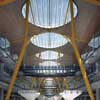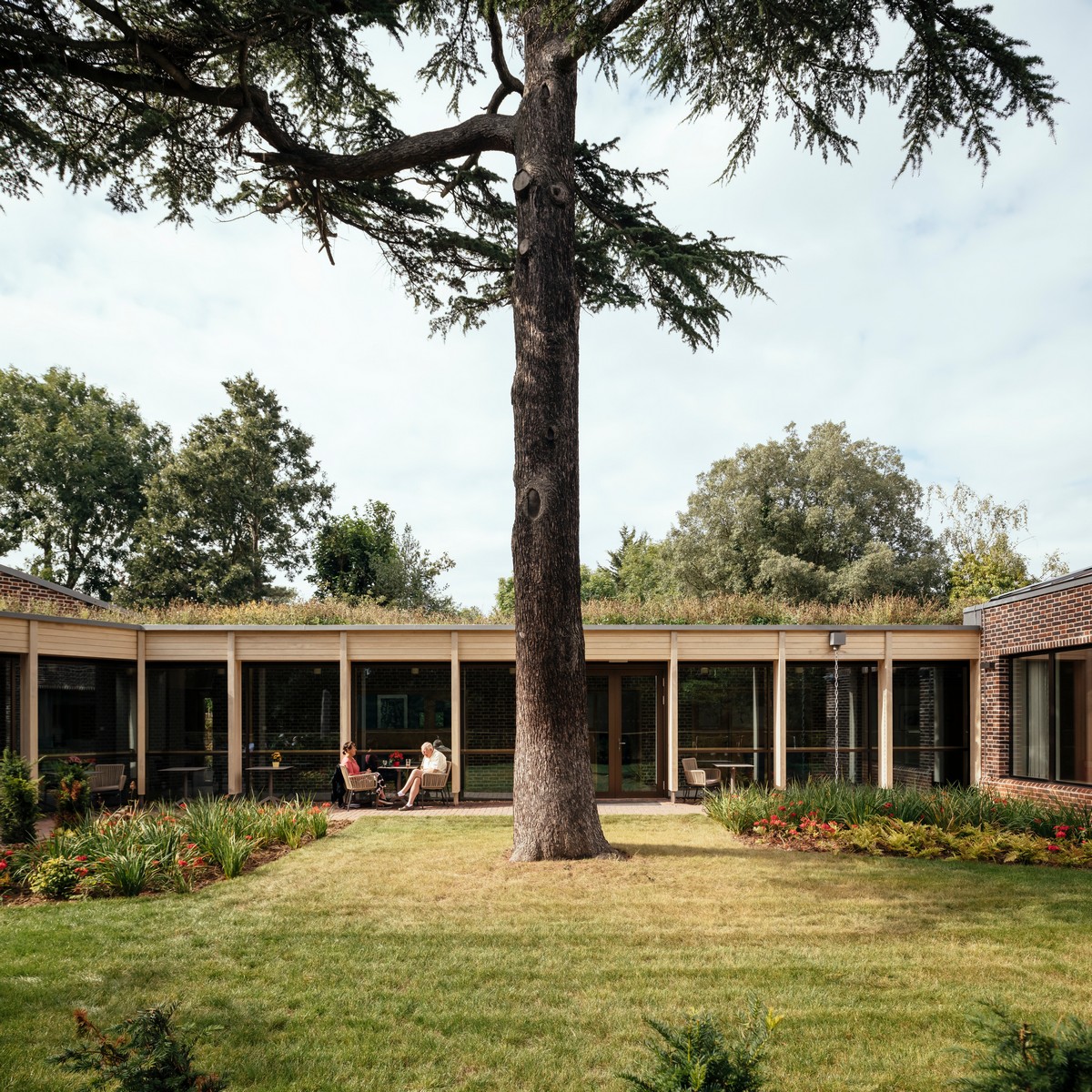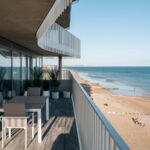Stirling Prize Architecture Winner, Shortlist, Betting Odds, News, Winning Building
Stirling Prize 2006 Winners
UK Architecture Award Winner 2006: Buildings + Architects
Stirling Prize 2006 Winner
Barajas Airport, Madrid, Spain by Richard Rogers Partnership

building image received from RRP Nov 2006
Stirling Prize winner 2006
Stirling Prize – announcement: 14 Oct 2006
Stirling Prize contenders : RIBA Awards announced 22 Jun 2006
Stirling Prize Shortlist 2006
Barajas Airport by Richard Rogers Partnership
Brick House by Caruso St John Architects
Evelina Children’s Hospital by Hopkins Architects
Idea Store Whitechapel by Adjaye/Associates
National Assembly for Wales by Richard Rogers Partnership
Phaeno Science Center by Zaha Hadid Architects
Aug 2006
Stirling Prize Judges 2006
Ian Ritchie – chair
Isabel Allen
Martha Schwartz
Mariella Frostrup
Stefan Behnisch
Favourite for the Stirling Prize 2006
After the RIBA Awards 2006 were announced we suggested the Phaeno Science Centre by Zaha Hadid as a favourite for the Stirling Prize, as did the bookies. Compared to projects such as Rogers’ innovative Spanish airport this building is radical and questioning. That doesn’t mean to say I think it is better than Barajas and the other contenders, it just fits the bill.
It is assured and innovative. However, in the end Zaha was unsuccessful again (last year pitted against the Scottish Parliament building) and this is a disappointment not just re the Phaeno Centre’s strength but partly because she’s not had a lot of luck in the UK (buildings actually built, awards won, etc.), and female & ethnic minority architects have struggled to get the credit they deserve in England.
Stirling Prize Judge 2006 – Ian Ritchie, chair
Stirling Prize Shortlist Architects : Links
Barajas Airport : Richard Rogers Partnership
Brick House : Caruso St John Architects
Evelina Children’s Hospital : Michael Hopkins of Hopkins Architects
Idea Store Whitechapel : Adjaye/Associates
National Assembly for Wales : Richard Rogers Partnership
Phaeno Science Center : Zaha Hadid
Presenter: Kevin McCloud
Television programme: Channel 4 TV – live
Stirling Prize winners – announcement: 14 Oct
Dinner venue: Roundhouse, London, redesign by John McAslan Architects
Stirling Prize 2006 Building Reviews
All reviews for e-architect – original content
Barajas Airport by Richard Rogers Partnership Review by Hugh Miller
The constraints posed by the practicalities of a working airport have prevented Rogers from fully flexing his space-planning muscles. But if you can not go through the brief – as it were – I guess you have to go over it. Rogers has done exactly this with an exquisite roof structure which dances over the concourse like the undulating hills which surround Madrid. As ever with Rogers, the detailing is measured to perfection, and the timber chosen to cloth the furrows of this roof evoke the baked earth of central Spain like little else could.
Attempts have been made to make the terminal a more user friendly environment. A colour-coding system has been employed where by tickets match-up to different sections of the departure lounge. These novelties appear luke warm, however, when compared to the extravagance (and, indeed, subtlety) of the roof. Yet another example of how Rogers uses the ‘big gesture’ as a design tool, something he has rightly been famous for ever since Pompidou.
Brick House by Caruso St John Architects Review by Hugh Miller
As the only residential scheme on the shortlist, the Brick House’s singularity demonstrates the difficulty of producing good homes. The product of an almost strangulating brief, the house could not elevate more than 1 storey from ground level and is heavily overlook on 3 sides. The effect of this on the internal spaces is marked. Shards of light penetrate the concrete ceiling slab through shafts, orientated to maintain privacy, making the living areas emit a cave-like quality. Light is subjected to taut control as it plays over the brick interior casting shadow as well as luminosity over its angular forms.
Enough rhetoric, does it work as a house? The roughness of the material pallet along with the sharp-edged detailing appears too dominant to provide the ‘home’ with a sense of sanctuary or comfort. It seems to lack the ability to withstand cloths being thrown on the floor, dodgy posters on the wall, the things that make our houses into homes. This house, although it triumphs over adversity in terms of brief and context, looses its way slightly when subjected to the way people actually live.
Evelina Children’s Hospital by Hopkins Architects Review by Adrian Welch
The Evelina hospital is formed from two main elements, the standard box and a glassy volume nuzzling up to it with a curved & glazed roof form. Clearly this building is part of the Hi-Tech lineage, a technological architectural style developed in England back in the Eighties. The expressed steelwork and the emphasis on a light-filled atrium are typical of this genre, initially made famous by Norman Foster and Richard Rogers.
The building is articulated by the use of a vivid orangey-red colour applied across the rectilinear steel elements, as opposed to the latticework of the curved atrium which is in refreshing white. The contrast of white, blue sky and this rich terracotta is successful and even on a dull day one can imagine this is still the case. Hopkins Architects have used colour and materials – combined with good detailing – to create a very readable atrium. Further into the building some of the fittings and decor seem less stimulating but the colour coding continues to create an integrated building.
Idea Store Whitechapel by Adjaye/Associates Review by Hugh Miller
An obvious choice for the shortlist due to its innovative brief and strong social agenda, Whitechapel Ideas Store sits rather in contrast to the high street it inhabits. Its bold use of colour and rectilinear proportions serve to instantly differentiate it from the surrounding urban grain.
Internally, the building suffers from some fundamental planning errors, in particular the stairs, which seem to have been constricted and contorted to fit into the buildings core like a square peg in a round hole. However, the café on level 3 makes this journey worth the trouble. It provides a meeting place, a place to talk and somewhere to relax. More importantly, it challenges the idea that a library should be a place of quiet individualism. Also helping to move the building away from this traditional viewpoint, blue and green panes glaze the building envelope filtering cool light over the interior, softening the concrete and adding intrigue to the outward vista.
Idea Store Whitechapel – London Architecture Designs
National Assembly for Wales by Richard Rogers Partnership Review by Adrian Welch
Like its sibling north of the border this devolved Parliament building is difficult to ‘read’ and was massively controversial, but, unlike the Scottish Parliament, it is vastly cheaper and smaller. Part of the reason is that much of the administration is housed next door in an existing rather poor building. Thus the building doesn’t have the same sense of community apparent in the Miralles building and is simply a forum for debate and meeting.
The National Assembly for Wales is dominated by the oversailing timber-clad roof. The roof is beautifully striated with wood boarding and swells up into steep forms not dissimilar to traditional Kent oasthouses. These forms allow the spaces below to rise up and provide welcome drama. At the corners of the cantilevered roof the canopy flips up at the corners in a delicate and sensual way.
The building oscillates between female and male and has none of the macho hi-tech bluster of Richard Rogers earliest key building, the Pompidou Centre in Paris. Completing at the same time as Enric Miralles’ Parliament building pushes comparisons forward – I find the lack of asymmetry and informality in the debating chamber stifling having experienced the relaxed and sensitive forms and patina at the Scottish Parliament but the moulding of organic form is successful overall and a huge improvement on recent Richard Rogers’ buildings such as the almost indecipherable European Law Courts.
Probably the precursor for this building’s warm woody materiality and organic roof section was the Law Courts in Bordeaux which marked a positive redirection in Richard’s career from Hi-Tech to a more layered architecture that works with more complex geometries.
Phaeno Science Centre by Zaha Hadid Architects Review by Hugh Miller
The building works on two levels. Above are the exhibition spaces, and below is the under croft where access to the building is gained. A place reminiscent of street level at Corbusier’s Unité d’Habitation, the under croft is circulation on a grand scale, skilfully managed to provide both spectacle and detail. Doorways appear carved out from its mass while, overhead, concrete moves away in every direction, as though making gravity redundant.
The building seems to rise from the landscape, but it is not of the earth – more forged from the engineering undertones of the city from which it was born. As with Hadid’s offering last year, this building is truly a product of its creator. It succeeds, however, through intelligent planning and a powerful consensus between form and context
Please mail your views on the Stirling Prize winner to info(at)e-architect.com
Stirling Prize : main page
Location: UK
Architecture Awards
Website:
Comments on the Stirling Prize Shortlist 2006 welcome




